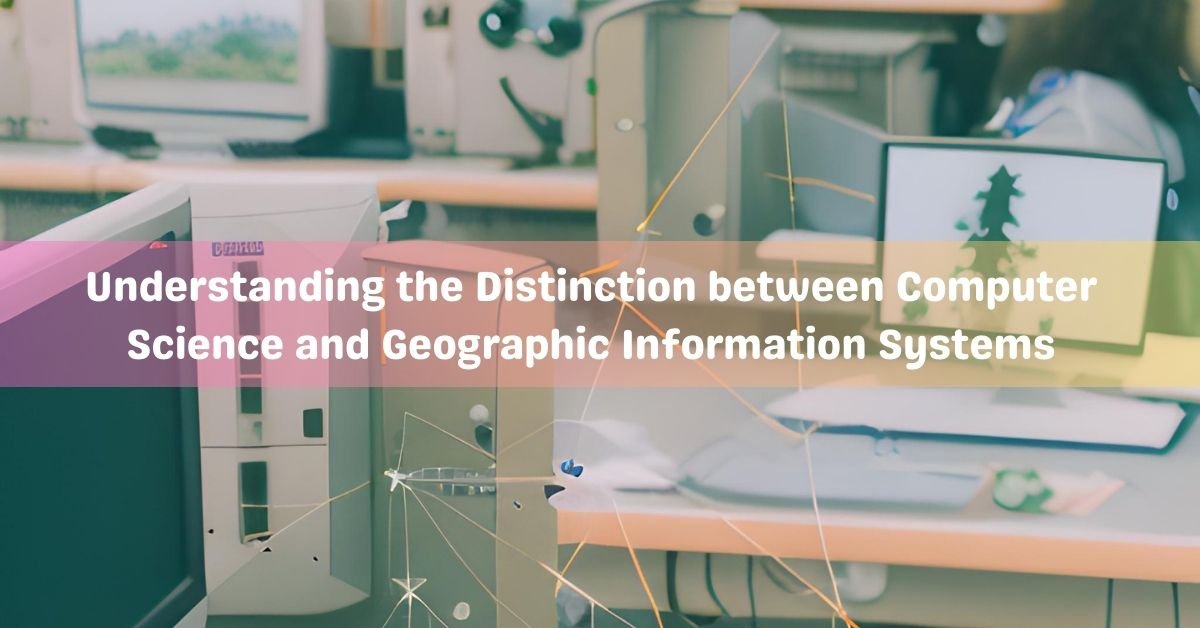Introduction: In the vast landscape of technology and information management, two fields often coexist but serve different purposes: Computer Science and Geographic Information Systems (GIS). While both are closely related and involve the use of computers and data analysis, they have distinct focuses and applications. This article aims to shed light on the key differences between Computer Science and GIS and highlight their unique contributions to the world of technology and information.
- Defining Computer Science: Computer Science is a broad discipline that encompasses the study of algorithms, programming languages, software development, data structures, and various computational theories. It focuses on the theory, design, and development of computer systems and software, aiming to understand and solve complex problems through computation. Computer Science emphasizes algorithmic thinking, software engineering, artificial intelligence, machine learning, and other computational concepts.
- Understanding Geographic Information Systems (GIS): Geographic Information Systems (GIS) is a specialized field that integrates computer science, geography, and spatial analysis. It revolves around the collection, storage, manipulation, analysis, and visualization of geographic data. GIS is concerned with capturing, managing, and representing spatial and non-spatial data, enabling users to understand patterns, relationships, and trends in geographic information. It utilizes specialized tools and software to work with geographic data sets, maps, satellite imagery, and location-based services.
Key Differences:
- Focus:
- Computer Science: The primary focus of computer science is the development of algorithms, software systems, and computational models to solve diverse problems across various domains. It deals with programming languages, data structures, artificial intelligence, and software development.
- Geographic Information Systems: GIS concentrates on the acquisition, management, analysis, and visualization of geographic data. It deals with spatial data representation, map creation, spatial analysis, and geospatial databases.
- Application Areas:
- Computer Science: Computer Science finds applications in almost every industry, ranging from software development, cybersecurity, robotics, data science, gaming, and much more. It provides the foundational knowledge required to develop software, design algorithms, and build computer systems.
- Geographic Information Systems: GIS is predominantly used in disciplines like urban planning, environmental management, natural resource analysis, transportation, public health, disaster management, and market research. It enables professionals to analyze spatial relationships, make informed decisions, and create maps for effective resource management.
- Skill Sets:
- Computer Science: Computer scientists are proficient in programming languages, data structures, algorithms, software engineering principles, database management, and system design. They possess strong analytical thinking, problem-solving, and computational skills.
- Geographic Information Systems: GIS professionals require expertise in spatial data analysis, cartography, remote sensing, geodatabase management, spatial statistics, and GIS software tools. They need a solid understanding of geography and possess the ability to interpret and analyze geographic data effectively.
- Tools and Technologies:
- Computer Science: Computer scientists work with a wide range of tools and technologies depending on their specific area of expertise. This can include programming languages like Python, Java, C++, development frameworks, data management systems, machine learning libraries, and integrated development environments (IDEs).
- Geographic Information Systems: GIS professionals utilize specialized software such as ArcGIS, QGIS, Google Earth, and remote sensing tools like ENVI or ERDAS Imagine. They also work with various geospatial data formats, GPS devices, and mapping tools for data visualization and analysis.
Conclusion: Computer Science and Geographic Information Systems are distinct yet interconnected fields that make significant contributions to the world of technology and information management. While Computer Science focuses on the theoretical and practical aspects of computing, GIS specializes in spatial data analysis and management. Understanding the differences between these fields can help individuals determine their interests and career paths more effectively. Moreover, the synergy between Computer Science and GIS is often leveraged to create innovative solutions that combine computational power and spatial analysis for addressing complex real-world challenges.

